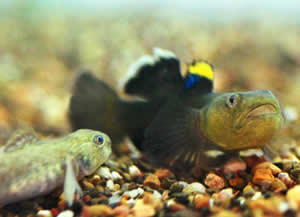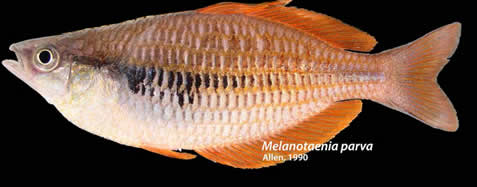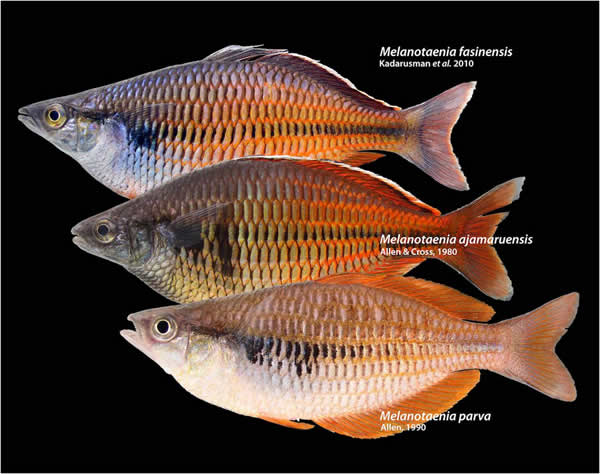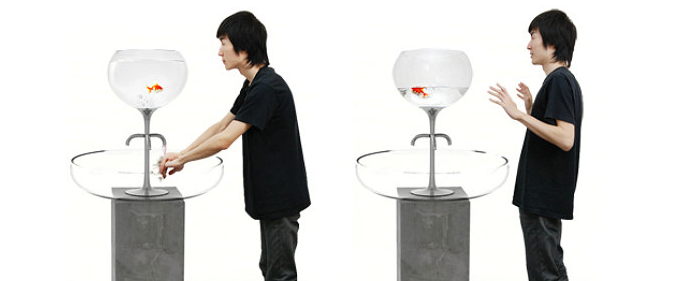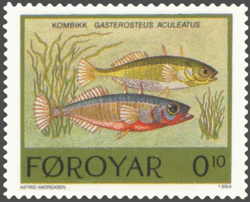Category Archives: Aquarium
Sea Life London Aquarium weans gourami off Kit Kats
Gold Nugget pleco and Mango pleco finally described by science
Two pleco species from the Xingu River drainage that are popular within the aquarium hobby have finally been scientifically described and given scientific names.
Aquarium calamity – are you prepared?
Many pet owners purchase pet insurance for their dogs, cats, horses etcetera but have you ever thought about the insurance needs of your aquarium? While few insurance companies would let you take out a life insurance policy on a guppy or be willing to pay for goldfish surgery, there are other types of insurance that any aquarium owner should consider.
The insurance needs of an aquarium owner can be divided into two categories:
Insurance for the aquarium itself, including equipment and inhabitants
Insurance that covers damages caused by the aquarium, e.g. water damage to the floor and the apartment below you
Your aquariums, their contents, and any damage caused by them may or may not be covered by your homeowner’s or renter’s insurance. You need to check your specific policy to find out more – and don’t forget to read the small print. Many insurance policies have quite a comprehensive exclusion list and it is not unusual for all aquariums, or certain aquariums, to show up on this list. Your insurance company may for instance only be willing to pay for damages caused by an aquarium up to a certain amount of gallons, or only cover aquariums that live up to certain standards. It is also quite common for insurance policies not to cover the inhabitants (livestock) of the aquarium but everything else. Some insurance companies will consider plants and corals inhabitants, while others see them as decor.
If you build your own hobby aquariums this doesn’t necessarily disqualify them from being insured. However, most insurance companies have rules stipulating that only “professional quality” aquariums can be insured. This doesn’t mean that an aquarium has to be built by a professional to insured, only that it has to live up to the same level of quality as a professionally constructed tank. Naturally, this is an area where insurance companies and aquarium owners do not always see eye to eye.
Last but not least, it is common for insurance companies to have a notification limit. If for instance your policy has a $1 500 notification limit, you have to inform the insurance company about any possessions that are worth more than $1 500. If for instance your home is burglarized and you file a claim for a $2 000 necklace that got stolen, the insurance company may refuse to cover the necklace if you failed to notify them about you keeping such a precious piece of jewelery in your home. If you own an aquarium, keep in mind that if you file a claim for the entire aquarium you may hit this $1 500 ceiling even if the tank itself did not cost $1 500 to buy. As any fish owner knows, the dollars can keep piling up quite rapidly. You buy a $500 tank, you add some nice filters and a heater, you get some additional stuff along the way, and soon you’ve reached the notification limit without even realizing it. Take a closer look at your aquarium. Would you file a claim if it was destroyed? If yes, have you notified the insurance company about its value?
G20 Summit Recruits Top Notch Security…. Goldfish???
That’s right.. The new team which has been charged with looking out for the safety and wellbeing of the representatives of the G20 summit are six goldfish.
The people in charge at the Convention and Exhibition Center in Seoul, South Korea, have sworn in this “seal team” of fish to help keep tabs on the purity of the water in the bathrooms of the facility, in the hope that they will be able to sound the alarm if something is fishy.
Oh Su-Young, who heads up public relations for the venue, has told the AFP that the crack team of goldfish are being utilized as part of the process of inspecting the venue before the representatives arrive for the G20 summit, adding: “The fish also symbolize an eco-friendly water policy, which recycles used water for restrooms.” There was no mention made of exactly where this recycled water came from..
One of the people who will benefit from the efforts of these goldfish is British prime minister David Cameron when the summit takes place this 11th and 12th of November.
However, this is not the first time this year where animals have been trained and put to good use for the safety and wellbeing of our world leaders.
During the Commonwealth Games in Delhi, the police force of India scooped up monkeys and trained them to run regular patrols in the athlete’s village as well as the venues of the event.
These unlikely bouncers with long tails were meant to protect spectators and athletes alike, from the notorious Bonnet monkey, which supposedly holds a grudge against us humans.
Ugly Females Will Do, If No Other Alternatives Available
Scientists out at the Monasah University have stumbled onto an amazing discovery. It appears that male Australian desert goby fish are smart when it comes to getting in the sack. They tend to adapt their ways of thinking when females are scarce.
The goby fish devote an abundant amount of time, energy, and risk their lives looking for a mate. Previous studies have shown that the male gobies are more likely to court bigger females as they can carry more eggs than the smaller females.
However, our clever little goby fish knows when he is beat, and knows when to settle. A new study, recently published in the journal Behavioral Ecology and Sociobiology, shows that if the male goby finds himself with a lack of females in his area, he will go after any that he finds, regardless of how big they are.
Doctors Bob Wong, Topi Lehtonen and Andreas Svenson have expanded upon their previous studies by getting their hands on goby fish from Central Australia, and keeping their eyes on them, in controlled conditions of course.
Dr Bob Wong, who is a senior lecturer in the Science Faculty at the university, has commented that the study has indicated that when the male goby ran into more females, they were far more picky about who they mated with, and how much energy they would use in the attempt.
“By contrast, males will court females vigorously irrespective of her attractiveness if passing females are few and far between,” Dr Wong explained.
This just goes to show that the male goby “like big butts and they cannot lie”, but more importantly know when they are licked, and know that beggars cannot be choosers.
Extinction Looms Near For Rainbowfish as Lake Dries Up!
A rather magnificent specimen of rainbowfish, prized and coveted for aquarium owners around the globe, is staring into the abyss, and could possibly face extinction since their home is drying up, and alien fish seem to be moving in.
The rainbowfish, Melanotaenia parva, was was described by accomplished ichthyologist Dr. Gerald Allen back in 1990. These magnificent rainbowfish hail from Kuromoi Lake on the Bird’s Head Peninsula in West Papua, Indonesia.
At the time of their discovery, the rainbow fish were abundant, however the water seemed to be receding. The level of the water of the lake had already reached levels lower than the outlet with the Yakati River, however more unsettling was the discovery that a non-native Tilapia had made its way on to the scene. Now, researchers have commenced a new study and have found some good news, and bad news.. Good news, a bright colorful new species of rainbow fish.. Bad news.. Lake Kuromi, where these rainbow fish call home, is almost completely dry.
Now a new study by scientists who have just described a new species of rainbowfish from the Bird’s Head Peninsula have shown that its home – Lake Kuromoi – is now almost completely dry.
These startling discoveries were made back in June 2007, but have only now made their way to the public eye. To top it all off, as if having your home dry out wasn’t bad enough, the rainbowfish now need to compete for survival with a rogue species of Tilapia.
What is to become of these poor rainbowfish?
Melanotaenia fasinensis – New Rainbow Fish Named From West Papua
Researchers have just discovered and described a new rainbow fish which hails from West Papua, Indonesia.
Ichthyologists, also known as fish scientists to us normal folk, Paradis, Pouyaud, Kadarusman and Sudarto are credited with the find and have dubbed the new kind of rainbow fish Melanotaenia fasinensis. They published this in a paper in the journal Cybium.
The new rainbow fish was found in the Fasin River, just about 25 clicks west of Lake Ayamaru on the West Papua’s Bird’s Head Peninsula.
The little guy was found floating about in a 1 meter deep, 4.5 meter wide stream, surrounded by flush greenery.
This rainbow fish lives over a substrate of gravel, and makes its home amongst limestone boulders and debris of fallen branches from the forest.
The Fasin River also boasts a myriad of other species such as sleeper gobies, and different types of crayfish.
The Bird’s Head Peninsula in Indonesia is considered a hotspot when one is going about and trying to find rainbow fish. There are many different kinds of rainbow fish which also call the place home, and they all seem to live in harmony with one another.
It’s good to see that the scientific world has not given up on seeking new kinds of this beautiful fish. Not only are they pretty to look at, but they are key to the survival of all the species in that ecosystem.
Some people have been trying to catch them and sell them off as pets, however an ordinance is in place telling people to refrain from such a practice.
Save Water, Or Risk Killing Goldie
This is certainly an interesting way to get people interested in conserving our planets’ water supply.
It appears that finally someone has come up with a way for us to be more conscientious of how much water we use.. Use less, or kill of your friend.. A rather ingenious, if a little sadistic, designer by the name of Yan Lu has come up with a sink that basically threatens to kill off an innocent goldfish if you use too much water when washing your hands.
It works much on the same principal as a toilet. As you wash your hands the water slowly empties out of a bowl which houses your friendly neighborhood goldfish, and when you are finished, gradually places more water back into the bowl.
The invention has been dubbed the “Poor Little Fishbowl Sink” and has been making quite a big splash in articles around the globe. You don’t need to worry about washing your hands with fishy water either, the water from the bowl empties into a different place, and doesn’t come out of the tap.
Of course, Yan Lu is not a sadist, so the bowl will never completely empty, though you can bet the poor goldfish is getting quite a workout on the old heart every time his home starts to disappear!
Lu is quoted as saying on his website: “As consumption is incalculable, saving is often neglected through daily consumption. Rather than forcing people to consume less, thus depressing the using experience, Poor Little Fish basin offers an emotional way to persuade consumers to think about saving water, by making consumption tangible.”
Way to go and help save the planet Lu! A few stressed out goldfish is worth it, if we can help ourselves to stop being so selfish by wasting water.
Male Fish Won’t “Ask For Directions”
Recent research has come to the astonishing conclusion that fish, specifically the males, positively refuse to ask for directions when they are breeding.
A recent research project, by the University of St. Andrews, has found that male fish seem to become more anti-social feeders, becoming even more so when they are ready to spawn.
As a result of this, they put themselves in greater peril, by leaving the shoal behind.
The claim is being made by researchers in charge of the project that this is one of the first studies performed that has shown a differences in the sexes when it comes to how animals learn from one another.
The current belief is that this trait is only seen in male fish when they are getting ready to spawn or are spawning, and may correlate to the distinct pressures faced by the sexes when spawning.
The research was conducted by Dr. Mike Webster and Professor Kevin Laland, whose goal was to take a look at the copying and learning behaviors of ninespine stickleback.
It appears the males tend to look for food reserves on their own, so that they can properly protect their young when the time comes, and this is why they don’t feed together.
Dr Webster added: “We are all familiar with the stereotype of males refusing to ask for directions – this might apply to fish too, but only when they are preparing to breed.”
Worlds largest lionfish
Spike, a magnificent specimen from the deeps of the ocean, is a whopping 18 inch long lionfish which is believed to be a world record breaker. (please observe that this info is now outdated. The world record is now 47 centimeters or 18.5 inches.)
Spike is one of two lionfish who call the Sequarium in Rhyl home, and is half an inch longer that the largest recorded lionfish.
Paul Tyson, the display manager at the Sequarium, has said that measuring the lionfish is quite a feat as they have those poisonous spikes on their backs.
However, it was well worth the risk in Spike’s case, as it has been found that he is a record breaker.
“Lionfish were originally found in the Indo-Pacific regions but they became popular in the aquarium trade and have since spread worldwide.” Paul explained.
“They are bought when small but grow rapidly and often outgrow their tanks, leading to owners releasing them rather than killing their beloved pet.”
“In the Caribbean they are now at such high numbers they are considered a pest and their capture for the table and recreational fishing is being actively encouraged.
“We’ve done a lot of research and as far as we know, the largest recorded lionfish ever caught is 17 ½ inches long.”
The vet at the zoo, who makes her rounds at all the public aquariums around the UK, has commented that the two lionfish are the biggest she has seen, and many other people in the industry have made the same comment.
Congratulations Spike!

